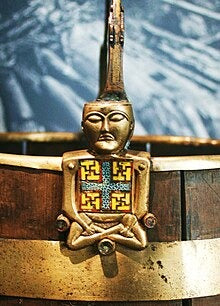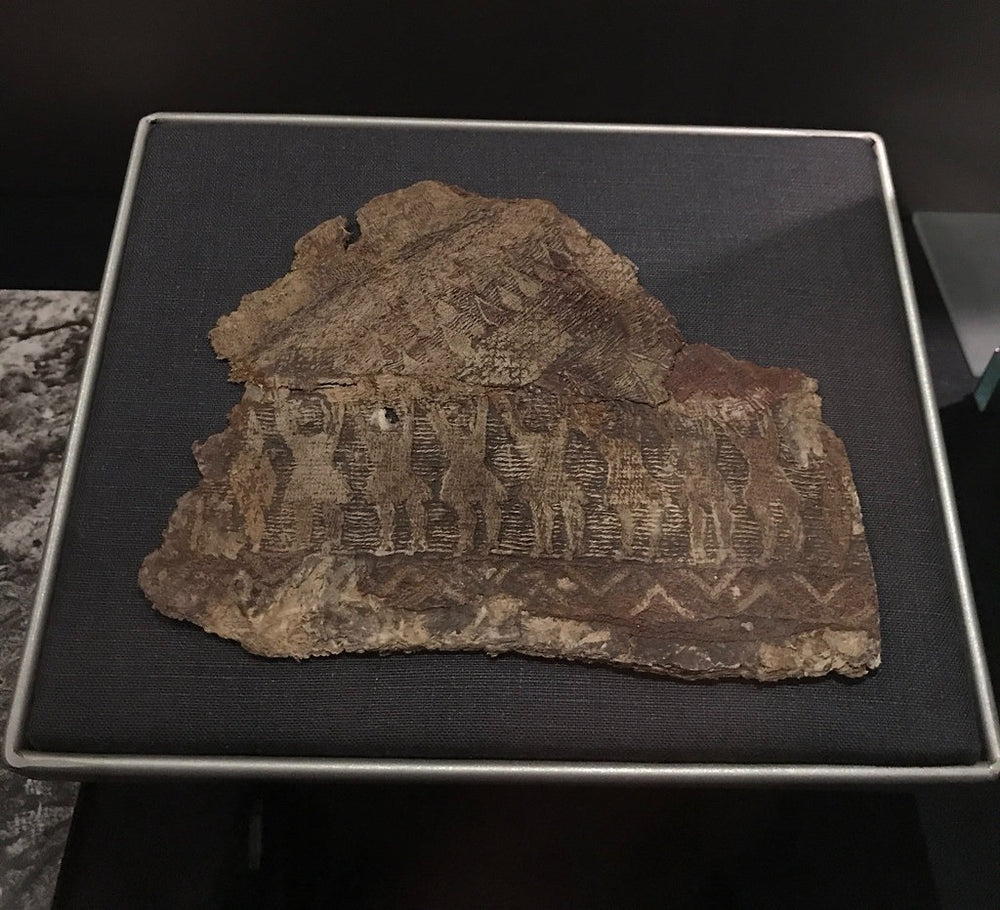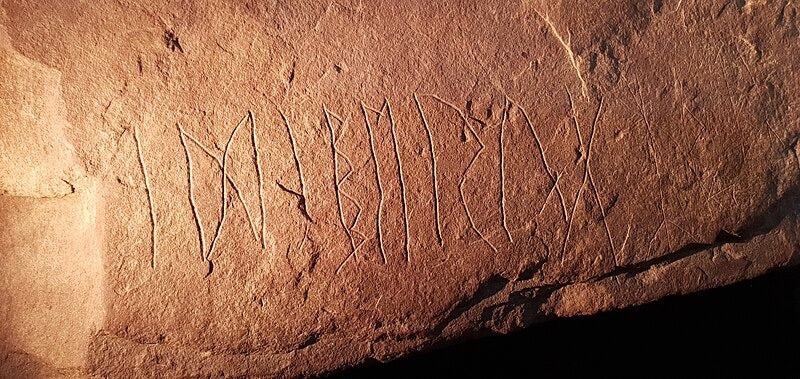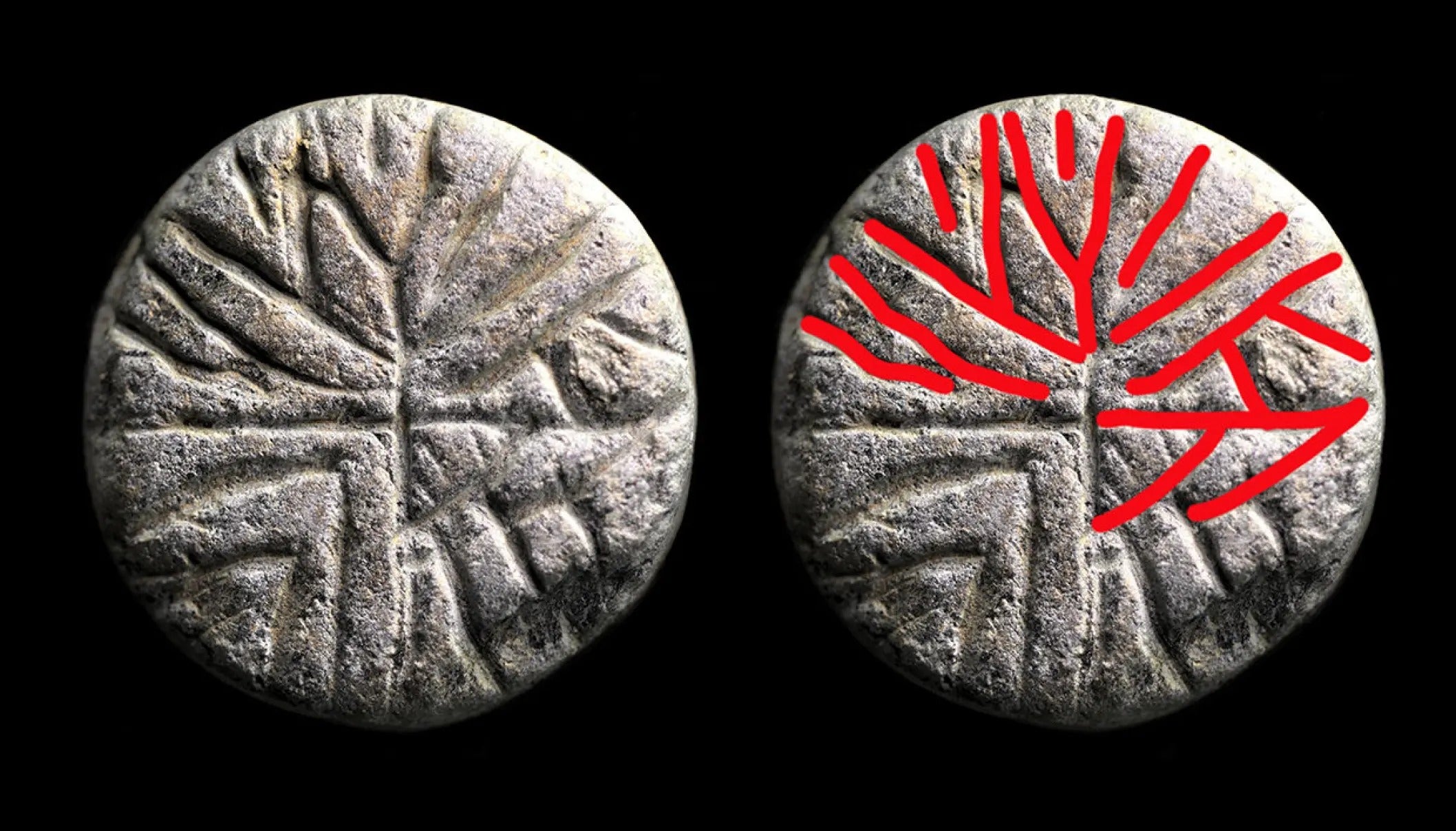
The Mysterious Buddha Bucket from a Viking Grave
The Oseberg burial mound, discovered in 1904 on a farm in Tønsberg, Norway, contained an array of artifacts that have long fascinated archaeologists and historians. Among these relics was a remarkable bucket, often referred to as the "Buddha bucket." This ancient object, thought to be over 1,000 years old, stood out for its unusual figure, which, though resembling a seated Buddha, originated from a Celtic tradition. In this article, we dive into the history, cultural significance, and the enigmatic origins of this unique artifact, while also uncovering the broader implications for our understanding of Viking history and interactions with the British Isles.
The Discovery of the Buddha Bucket
The bucket was found amidst the ruins of the Oseberg Viking ship, which had been crushed by centuries of pressure from stone and soil. Unlike many other artifacts, which were broken into thousands of pieces, the bucket remained mostly intact, despite losing some of its shape over time. Made from yew wood, known for its durability, and held together by a bronze band, this artifact showcases the skillful craftsmanship of its creators. According to Hanne Lovise Aannestad, an archaeologist at the Museum of Cultural History in Oslo, "The bucket resembles something you could buy in an antique store today, but it has indeed been buried for a thousand years."

One of the textiles, depicting nine figures hanging from the branch of a tree
Interestingly, the bucket was buried alongside two women, textiles, beds, and various other valuables, suggesting that it might have held particular significance in the burial chamber. The figure on the bucket, however, raises questions about its origin and meaning.
The "Buddha" Figure: A Misleading Name?
When the archaeologist Gabriel Gustavsen discovered the bucket, he exclaimed, "It's a Buddha!"—a remark that would ultimately lead to the object being called the Buddha bucket. However, this name is misleading. The figure on the bucket, though seated in a lotus position, bears no relation to Buddhism. According to Aannestad, the figure is, in fact, Celtic and likely crafted by monks in what is now Ireland or England. The geometric patterns on the bronze figure are typical of Celtic art from the 8th century, reinforcing the notion that this object originated outside of Scandinavia.
The mystery surrounding the figure on the bucket deepens when considering its purpose. It may depict an ancient ritual, possibly linked to a long-abandoned Celtic practice. One theory suggests that it represents a nobleman sacrificed to intercede with the gods, a ritual documented by Roman sources several centuries earlier. The somber expression on the figure's face further lends credence to this idea, though definitive answers remain elusive.
Celtic Influence on Viking Burials
The Buddha bucket is not the only Celtic artifact to find its way into a Viking burial. Similar figures have been found in other parts of Norway, such as Nordfjordeid and Lindesnes, also attached to vessels. These discoveries point to the strong influence of Celtic culture on the Vikings, particularly during the height of Viking raids on monasteries in Ireland and England. The Vikings frequently looted these monasteries, seizing valuable artifacts, which they often repurposed into jewelry or other objects. The fact that the Buddha bucket was brought to Norway intact, rather than dismantled, suggests that it may have been a gift, rather than plunder.

One of the barrels found in the Oseberg ship (Photo: Peulle CC BY-SA 4.0).
Aannestad points out that the Viking elite likely formed alliances with their counterparts in the British Isles, with exchanges of goods and even children between royal families. These relationships may explain how the bucket found its way into the Oseberg burial, potentially as a gift from a Celtic ally.
The Toxic Nature of the Yew Wood
One of the more intriguing aspects of the bucket is its material: yew wood. Yew is a toxic plant, with its wood, berries, and needles capable of causing fatal poisoning if ingested. This raises the question of why such a material would be chosen for a container. Plant researcher Charlotte Sletten Bjorå from the Natural History Museum in Oslo remarks that fatalities from yew poisoning, while rare, do occur. She adds, "I wouldn’t have made a bucket from toxic wood." The bucket's toxicity likely made it unsuitable for storing food or water, leading to its being buried empty. This sets it apart from the other buckets in the Oseberg burial, which contained food for the two women on their journey to the afterlife.
Yew wood was highly prized for its strength and durability, often used for making bows, sleds, and hayracks. Its slow growth made it exceptionally resilient, capable of lasting for generations. While the use of yew for a bucket might seem puzzling, it may have been chosen for symbolic reasons or simply for its availability and durability.
Viking Raiders, Thieves, and the Aftermath
The Oseberg burial mound was not left undisturbed for long. A century after the burial, thieves broke into the mound, pillaging the grave goods and creating chaos in the process. The thieves likely made off with many of the most valuable items, and it is impossible to determine how the original items were arranged in the burial chamber. This robbery, which took place around 953 AD, has complicated efforts to fully reconstruct the burial scene, though the Buddha bucket remains one of the most enigmatic and valuable artifacts from the site.
The Buddha Bucket's Legacy
The Buddha bucket has sparked significant interest not only in Norway but also in the UK, where researchers have drawn comparisons with similar artifacts. Its unique blend of Celtic craftsmanship and Viking burial practices offers a glimpse into the complex web of cultural exchange between the Norse and the peoples of the British Isles during the Viking Age. Today, the figure on the bucket is set to become one of the iconic symbols of the new Viking Age Museum, scheduled to open in 2026.
The Buddha bucket (Photo: Thorguds CC BY-SA 3.0).
As Aannestad puts it, "The face is so fascinating, and its exceptional preservation adds to its suitability as a good icon." The bucket not only tells the story of Viking raids and alliances but also symbolizes the enduring connection between the past and present, as it continues to captivate modern audiences.
Conclusion
The Buddha bucket is a compelling artifact that bridges the gap between Viking and Celtic cultures. Its discovery in the Oseberg burial mound has opened up new avenues for understanding the complex relationships and exchanges between these ancient peoples. From its mysterious figure to its toxic material, the bucket raises as many questions as it answers, offering a tantalizing glimpse into the past. As research continues, this enigmatic object will undoubtedly remain a focal point for archaeologists and historians alike, enriching our understanding of Viking Age history.
References
Kristiansen, N. (2024, January 12). This bucket remained buried in a Viking grave for 1,000 years, but is in excellent condition. Science Norway. https://www.sciencenorway.no/archaeology-history-viking-age/this-bucket-remained-buried-in-a-viking-grave-for-1000-years-but-is-in-excellent-condition/2308233
Grieg, S. (1928). Osebergfundet. University of Oslo.
Bjorå, C. S. (2024). Plant toxicity and historical uses of Yew in Scandinavian culture. Natural History Museum, Oslo.
Aannestad, H. L. (2024). Cross-cultural exchanges in Viking Age Norway. Museum of Cultural History, Oslo.
"Tapestry from Oseberg Viking Burial II" by A.Davey is licensed under CC BY-NC-ND 2.0.









